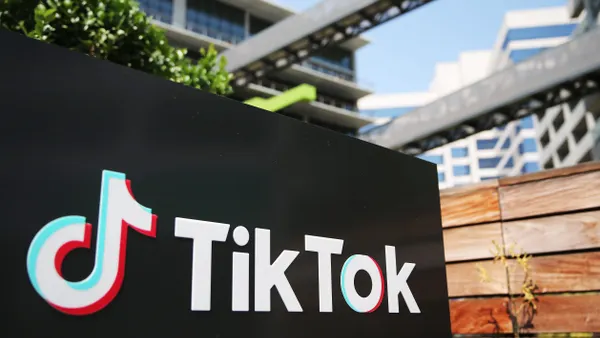As the brand reaches its 15th anniversary in April, Tommy John's CEO is looking back on its growth.
The undergarments brand – which debuted in 2008 – has been profitable since it launched and always adopted an omnichannel approach, Tom Patterson told Retail Dive.
Brands across the retail industry have been working to balance their physical footprints over the past year, as well as push deeper into wholesale while still growing direct-to-consumer digital channels.
Tommy John currently has over 3,000 points of wholesale distribution, which include partners such as Nordstrom, Dick’s Sporting Goods, Dillard’s and Scheels. The brand also has five of its own brick-and-mortar locations, with plans to open three more this year.
But Tommy John hasn't just counted on its diverse sales channels on its path to growth. Halfway through its second decade, Patterson reflects on how the brand got here.
Radio star
Radio was never a dying industry for Tommy John, which saw the format as a way to boost direct-to-consumer sales.
“We actually started out online, but the majority of our business was wholesale for the first four or five years, starting with Neiman Marcus,” Patterson told Retail Dive. “And then our online business really started to take off in 2013 and 2014. We started learning new ways to market the underwear category through your ears, like with Howard Stern, podcasts, Sirius radio … That's really when our online business started to scale really quickly.”
Patterson said SiriusXM still makes up a big part of the business. The rise of podcasts has also expanded the channel’s potential, and the brand is focused on diversifying its marketing.
“We're pretty much everywhere now,” Patterson said. “Sirius radio, podcasts, TV, direct mail, catalog ... there's really not a channel that we don't advertise in today.”
Podcast advertising spend in the U.S. was estimated to have reached $1.73 billion in 2022 and is expected to reach around $2.5 billion in 2024, according to data from Statista.
Podcast awareness is growing overall, with 79% of U.S. respondents in a Statista survey saying they were aware of the podcast format in 2022 compared to 22% in 2006, and over 82 million people listening to them in 2021.
Selling $1 for more than $1
Another early staple of Tommy John’s strategy was slow, profitable growth. However, plenty of venture- and private equity-backed brands have only just started to feel the pressure to reach profitability.
When Everlane let go of 9% of its workforce in January, its CEO explained how expectations around profitability changed.
“It’s no secret that these are difficult times for venture-backed companies. The expectation to be profitable shifted overnight,” Everlane CEO Andrea O’Donnell wrote in an internal memo reviewed by Retail Dive.
For Tommy John, its early-on profitability is in part thanks to the macroeconomic environment it was born under.
“I wouldn't say it was a complete accident, but we launched during the 2008 financial crisis, with the market crash and the retail recession followed,” Patterson said. “And I read this article that there's no better time to start a company than during a recession. … I think one of the key learnings we had back then is you have to sell $1 for more than $1.”
At the time, Patterson said they didn’t want to rely on outside funding due to the opinions it could bring in.
“Because we didn't raise or really know how to raise money at the time, we had to have a profitable business model from day one,” Patterson said. “And since then, it's just been slow, sustainable, profitable growth, really not trying to grow too fast or scale too quickly.”
While the business started off entirely self-funded and ran up credit card bills, according to Patterson, it has since welcomed outside investors.
“Now it's just a discipline that we have in place that we get highly uncomfortable if it looks like we're not going to make money.”

Tom Patterson
Chief Executive Officer
In 2014, Tommy John raised a small amount of funding with angel investors. The brand then announced a partnership with LNK Partners in 2022 in which the private equity firm made a minority investment in Tommy John.
“We waited. I waited a really long time,” Patterson said. “We never felt like we were forced to raise money because we weren't making money. It was always a choice that we looked at almost every year. … And we just never felt the time was right until then.”
Patterson’s dedication to profitability is a value he thinks is reflected in iconic brands such as Patagonia and Nike, which also emphasize more sustainable growth.
“Now it’s just a discipline that we have in place that we get highly uncomfortable if it looks like we’re not going to make money," Patterson said.
When it comes to category expansion for growth, the chief executive said the brand has tried to be thoughtful about it while sticking to its undergarment roots.
Comfort is an important aspect of the brand’s identity and so the move into pajamas felt natural to Patterson, who said the category boomed during the onset of the COVID-19 pandemic.
“I think there's, you know, a lot of times brands try to do so many categories at once,” Patterson said. “And it's hard to know what they're great at versus what they're good at.”















